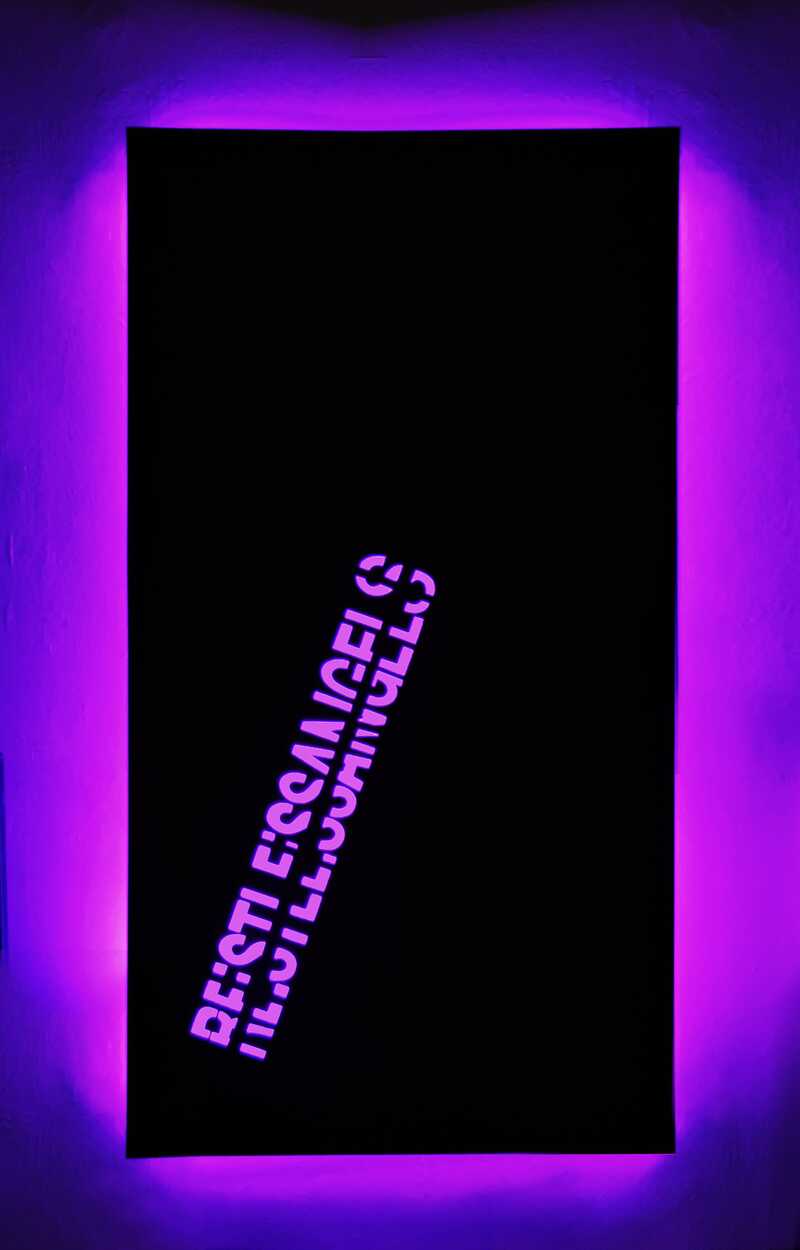The words "restless angels" cut into the sculpture, illuminated by ethereal light, serve as both a poetic contrast and a harrowing commentary on the degradation of our ecosystem and the onset of the Anthropocene epoch. The juxtaposition of celestial beings and ecological turmoil is a powerful metaphor, suggesting that even the divine may be unable to calm the environmental turbulence wrought by human actions.
In its minimalism, the sculpture symbolises the stark, uncompromising reality of the Anthropocene. The artist's choice of a Euclidean form seems to underscore the structured, predictable nature of our geometric world, which is now beset by chaos and uncertainty due to our own actions. The precision of the sculpture's shape becomes a reflection of human dominance and control over the natural world, only to be destabilised by the consequences of our hubris.
The light emitting from the words "restless angels" is both a beacon and an omen. It beckons viewers to engage with the artwork and its ecological message. Yet, it also casts an eerie glow, suggesting that the intervention of human agency has disrupted the delicate equilibrium of the natural world, transforming even angels into figures of restlessness.
The sculpture ultimately serves as a haunting reminder of our responsibility as stewards of the Earth. Its minimalist form challenges us to confront the starkness of our environmental choices, while the words etched into it remind us that our actions have far-reaching consequences, affecting not only the terrestrial realm but even the celestial order. In this way, the sculpture compels us to reflect on our role in the Anthropocene epoch and our collective responsibility to mitigate the degradation of our ecosystem before it's too late. It is a silent, yet powerful, call to action wrapped in a deceptively simple form.
